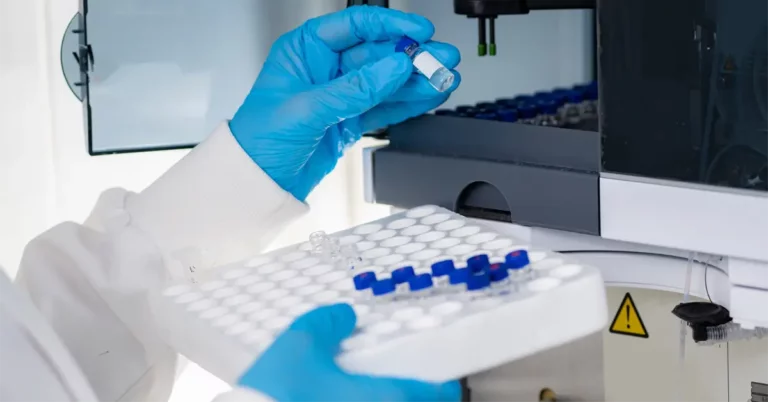The Centers for Medicare and Medicaid Services (CMS) issued its final rule concerning remote patient monitoring (RPM) reimbursement under the Medicare program on December 1, 2020. The changes are aimed to clarify CMS’ position on how it interprets requirements for RPM services. This rule finalizes many of the proposals released in August 2020.
Moreover, on January 19, 2021, CMS issued a correction revising its preamble commentary in the 2021 Physician Fee Schedule Final Rule. Here are the CMS’ policies in the 2021 Final Rule and the revisions made.
Definition of Remote Patient Monitoring (RPM)
RPM is a technological process of collecting and analyzing patient physiological data outside of clinical environments like in the home or in a remote area. The data collected is used to generate a treatment plan.
The five primary Medicare RPM codes:
- CPT Code 99453: Initial set-up and patient education on use of equipment.
- CPT Code 99454: Device/s supplied to the patient with daily monitoring or data transmission. (Only if the patient has at least 16 days of readings should this CPT code be added on the last day of the calendar month.)
- CPT Code 99457: 20 minutes of RPM care provided by clinical staff/physician/other qualified healthcare professional time in a calendar month, requiring interactive communication with the patient/caregiver during the month (initial 20 minutes)
- CPT Code 99458: Each additional 20 minutes (List separately.) Once the physician has provided at least 40 minutes of care to the patient, this code can be added to 99457.
- CPT Code 99091: Collection and interpretation of physiologic data (e.g., ECG, blood pressure, glucose monitoring), digitally stored and/or transmitted by the patient and/or caregiver to the physician or other qualified healthcare professional, qualified by education, training, licensure/ regulation (when applicable) requiring a minimum of 30 minutes of time, each 30 days.
The medical device(s) supplied to the patient and used to collect physiological data are considered equipment and as such are direct practice expense inputs for the code. Providers should always consult with their certified billing and coding professionals for proper Medicare device billing.
The CMS reaffirmed the following in the final rule 2021:
- Healthcare providers may furnish RPM services to chronic disease patients and to patients with acute conditions.
- RPM can be ordered and billed only by physicians or non-physician practitioners who are eligible to bill Medicare for E/M services. RPM codes are considered Evaluation and Management (E/M) services.
- Although CPT Code 99091 can only be furnished by a physician or other qualified healthcare professional, CPT Codes 99457 and 99458 may be provided by a physician or other qualified healthcare professional or by clinical staff under the general supervision of a physician.
- CMS finalized its proposal to allow auxiliary personnel, in addition to clinical staff, to furnish the services listed in CPT codes 99453 and 99454 under the general supervision of the billing physician or practitioner.
- Consent to RPM can be obtained at the time RPM services are furnished. The consent can be obtained by individuals under contract with the billing physician or qualified healthcare professional.
- RPM services are not recognized as diagnostic tests; so, they cannot be furnished and billed by an Independent Diagnostic Testing Facility on the order of a physician.
- The RPM device must meet the FDA’s definition of a medical device as described in section 201(h) of the Federal, Food, Drug and Cosmetic Act. CMS confirmed there is no language in the CPT Codebook indicating the RPM device must be FDA-cleared/registered, but such clearance may be appropriate.
Using RPM with new and established patients
CMS claimed in the 2021 Final Rule that RPM services are restricted to “established patients”. In support of this stance, CMS stated that a physician who has established a relationship with a patient would likely have had the ability to offer a new patient E/M service. During the new patient E/M service, the physician would have obtained the necessary patient history and performed a physical examination, as needed. As a result, the physician would have the information necessary to understand the current medical condition and needs of the patient before directing the RPM services to collect and examine the physiological data of the patient and to establish a treatment plan.
CMS waived the restriction of “established patient” during the Public Health Emergency (PHE) but, in the 2021 Final Rule, CMS refused to extend the exemption beyond PHE. CMS’s waiver indicates (but does not specifically state) that, during PHE, practitioners can provide RPM services without first performing a new E/M patient service. After the PHE waiver has expired, a patient-practitioner relationship would need to be formed to bill Medicare for CPT 99453, 99454, 99457 and 99458. Usually, this would involve a new patient E/M service to be performed by the practitioner.
Time spent on ‘interactive communication’ with a patient
20 minutes of time includes, but not limited to, “Interactive Communication” with patient – The CMS made a correction stating the 20-minutes of intra-service work associated with CPT codes 99457 and 99458 encompasses the time of the practitioner engaged in “interactive communication” as well as time engaged in non-face-to-face care management services during the month.
CMS stated in the final rule that “interactive communication” for the purposes of CPT codes 99457 and 99458 requires, at a minimum, real-time synchronous, two-way audio interaction that can be enhanced by video or other types of data transmission.
The required 20 minutes of time associated with CPT codes 99457 and 99458 includes care management services, as well as synchronous, real-time interactions with the patient. CMS clarified the “interactive communication” element contributes to the total time, but is not the only activity that can be included when calculating the 20 minutes per month. This clarification reverses the commentary in the Physician Fee Schedule Final Rule, but is consistent with the statements in CMS’ associated Fact Sheet published the same day.
Fact Sheet issued in accordance with the final law, CMS writes, “…We further clarified that the 20-minutes of time required to bill for the services of CPT codes 99457 and 99458 can include time for furnishing care management services as well as for the required interactive communication.”
RPM billing by one practitioner, per patient, per period
CMS clarified that only one practitioner can bill CPT codes 99453 and 99454 for a span of 30 days and only if at least 16 days of data has been obtained from at least one medical device. “Even when multiple medical devices are provided to a patient,” CMS explained, “the services associated with all the medical devices can be billed by only one practitioner, only once per patient, per 30-day period, and only when at least 16 days of data have been collected.” The services must also be reasonable and necessary in order to be reimbursed under the Medicare Program.
Contact DrKumo to know more about Coding and Billing for Remote Patient Monitoring.








